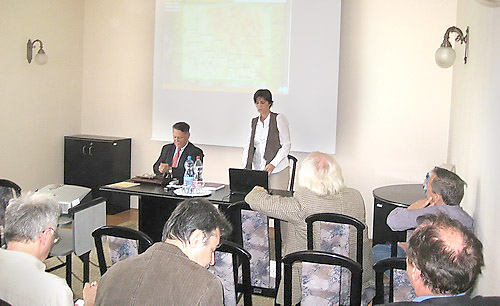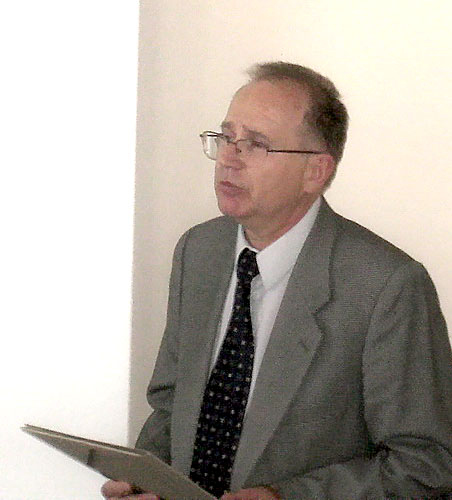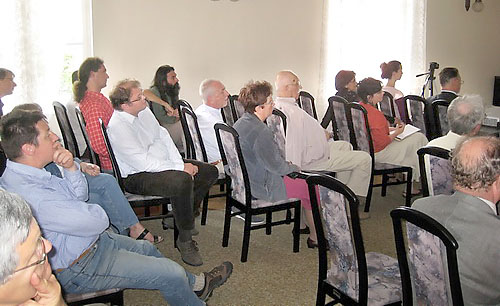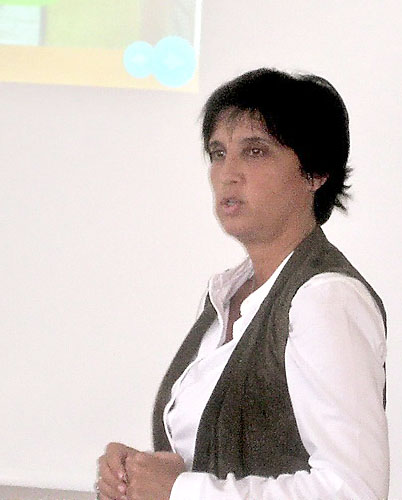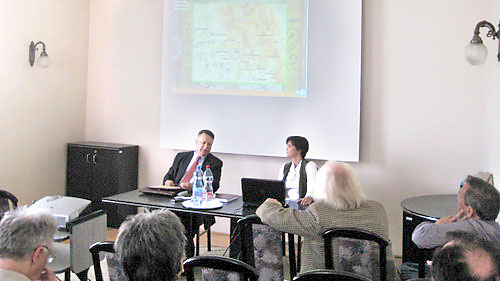 The Hungarian Prehistory Research Team of the Institute of History (Research Centre for the Humanities, Hungarian Academy of Sciences) held its lecture and discussion session on 14th June, 2012, about the Székely script.
The Hungarian Prehistory Research Team of the Institute of History (Research Centre for the Humanities, Hungarian Academy of Sciences) held its lecture and discussion session on 14th June, 2012, about the Székely script.
The Székely script is a kind of letter writing script, which was used among the Székelys of south-east Transylvania. Its origin is still controversial, though it has been studied by many scholars throughout the centuries.
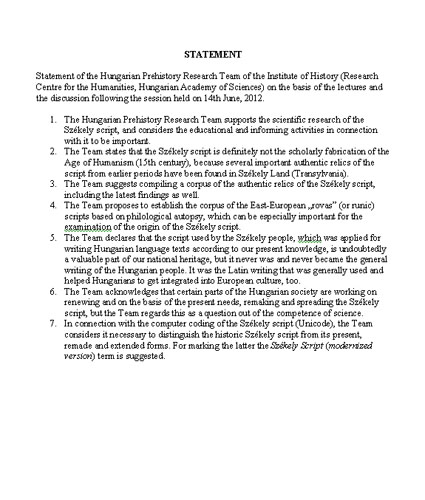 The first lecture reviewed the most important questions regarding the Székely script: its characteristics, relics, the changes in its usage, the history of its research and its supposed connections to other scripts. The lecturer, Klára Sándor, PhD (linguist, Szeged University) emphasized the importance of the scientific research of the script, especially with the comparative research of East-European runic scripts. She stated that the Székely script was definitely not the scholarly fabrication of the Age of Humanism (15th century), because several important authentic relics of the script from earlier periods have been found in Székely Land (Transylvania). The most important relics with Székely script are: the brick from Székelyderzs, the inscription of Bögöz village’s temple, the Alphabet of Nikolsburg, Marsigli’s calendar with Székely script, the carved inscription of Constantinople, and the inscription of Énlaka. In the past thirty years other remains have been found in Székely Land, and more can be expected to surface in the future. Klára Sándor pointed to the fact that the script has experienced a new revival in the past 10-15 years, partly connected to the revival of national symbols. This fact makes the question and its research especially important, as the Székely script has always been strongly connected to the Hungarian national identity.
The first lecture reviewed the most important questions regarding the Székely script: its characteristics, relics, the changes in its usage, the history of its research and its supposed connections to other scripts. The lecturer, Klára Sándor, PhD (linguist, Szeged University) emphasized the importance of the scientific research of the script, especially with the comparative research of East-European runic scripts. She stated that the Székely script was definitely not the scholarly fabrication of the Age of Humanism (15th century), because several important authentic relics of the script from earlier periods have been found in Székely Land (Transylvania). The most important relics with Székely script are: the brick from Székelyderzs, the inscription of Bögöz village’s temple, the Alphabet of Nikolsburg, Marsigli’s calendar with Székely script, the carved inscription of Constantinople, and the inscription of Énlaka. In the past thirty years other remains have been found in Székely Land, and more can be expected to surface in the future. Klára Sándor pointed to the fact that the script has experienced a new revival in the past 10-15 years, partly connected to the revival of national symbols. This fact makes the question and its research especially important, as the Székely script has always been strongly connected to the Hungarian national identity.
The second lecturer, Elek Benkő, PhD (archeologist, Institute of Archeology, Research Centre for the Humanities, Hungarian Academy of Sciences) spoke about the new findings concerning the Székely script, and underlined the importance of compiling a corpus of its authentic relics, including the latest findings as well. He also stated that for the examination of the origin of the Székely script, it would be necessary to make the corpus of the East-European “rovás” (or runic) scripts based on philological autopsy, with the joint research of the experts of different fields of study.



